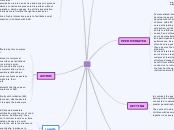Social Learning is Active “Practice is the Key to Social Success”
four processes are deemed necessary to promote the acquisition of social behavior, namely, attention, retention, production, and motivation.
Video modeling has consistently gained empirical support across a number of studies for improving various aspects of social functioning and teaching adaptive behaviors, such as reciprocal play and promoting social language verbalizations in children with autism
PEER MEDIATED
Peer-mediated interventions utilize typically developing peers as agents of change, facilitating the development of social behavior and engagement in children with ASD
eers participating as mediators canTherefore, children with autism will be able to gain greater insight and ability to attribute mental states and feelings onto oneself and others.
peers demonstrate positive social-emotional growth and participation does not interfere with academic performance. As an added benefit, participating peers often develop positive and accepting attitudes when they observe the capability of their peers with a disability
Peer-assisted learning strategies implemented within an inclusive classroom environment can provide reciprocal learning when delivered in a supportive and structured manner (90). In the process, children can benefit from different instructional procedures that are conducive to individual learning needs while allowing the teacher the opportunity to supervise a variety of instructional methods simultaneously
SETTING
In contrast, the positive impact of social skills training with or without peers can be enhanced when conducted in natural settings, thereby leading to greater generalization and maintenance
The context in which typically developing peers and children with developmental needs are brought together is especially critica
theatre
Acting is an interactive process that involves many aspects of socializing, namely, observing, perceiving, interpreting, and expressing thoughts and ideas
An actor must learn to take on the perspective of another character, which includes their beliefs and feelings. The process can lead to enhanced awareness and increased understanding of the experiences of other people. Thus, in the process, children with ASD may gain greater insight and ability to attribute mental states and feelings onto oneself and others
Acting provides the opportunity for the children with ASD to interact with peers and indirectly practice social skills.
Improvisation is also an active and dynamic process in which scenarios are presented to perform without preparation, which engages the child’s imagination and allows more flexible thought and behavior.
utilizes highly interactive peers to facilitate social interaction in children with ASD.
AUTISM
1 in 68 individuals are now affected by this complex neurodevelopmental disorder
levels of functioning is impairment in reciprocal social interaction, which can manifest as limitations in many areas of functioning including social-emotional reciprocity, to-and-fro conversation, play behavior, use of non-verbal communication, and in the development of age-appropriate relationships
show significant anxiety in social contexts especially as they get older and gain insight into their challenges engaging with others
no known pharmaceutical treatments that have been shown to improve the core symptoms of ASD
children with autism have difficulty with imitation (69), which includes knowing who to model, what behaviors to imitate, and in what context to apply the behaviors learned
results
. The participants with ASD showed moderate improvement in face identification and theory of mind skills following the intervention. Additionally, they demonstrated a reduction in cortisol levels over time (28). The findings suggested changes in social perception and adaptation to the social environment.
Moreover, in the most recent data, increases in adaptive skills were reported for functional academics [t(18) = −2.617, p = 0.017] and self-direction [t(18) = −2.179, p = 0.043] suggesting that the treatment has positive impact beyond the targeted social communication skills.
produces improvement in core areas of functioning for many children with ASD, namely, gains in social cognition, memory, and behavior.
